

Chapter 1. The Balance Scale Problem
Synopsis
The Balance Scale Problem

Author
Thomas E. Ludwig, Hope College
Michelle Ryder, Daniel Webster College
Synopsis
Jean Piaget designed many experiments to explore the development of logical reasoning in children. This activity focuses on the balance scale task, which Piaget and his colleague, Bärbel Inhelder, used to test children’s understanding of the relationship between weight and distance. Children of varying ages apply their understanding of this relationship to predict the movement of the arms of a balance scale. You will observe videos of children and an adolescent performing the balance scale task. You will also have an opportunity to perform the task yourself with an animated balance scale.
REFERENCES
Inhelder, B., & Piaget, J. (1955/1958). The growth of logical thinking from childhood to adolescence (A. Parsons & S. Milgram, Trans). New York: Basic Books.
Jansen, B. R. J., & van der Maas, H. L. J. (2002). The development of children’s rule use on the balance scale task. Journal of Experimental Child Psychology, 81, 383-416.
Klahr, D., & Siegler, R. S. (1978). The representation of children’s knowledge. In H. W. Reese, & L. P. Lipsit (Eds.), Advances in child development and behavior. New York: Academic Press.
Siegler, R. S. (1976). Three aspects of cognitive development. Cognitive Psychology, 6, 481–520.
Siegler, R. S. (1981). Developmental sequences between and within concepts. Monographs of the Society for Research in Child Development, 46, Whole No. 189.
Siegler, R. S., & Chen, Z. (1998). Developmental differences in rule learning: A microgenetic analysis. Cognitive Psychology, 365, 273–310.
Siegler, R. S., & Chen, Z. (2002). Development of rules and strategies: Balancing the old and the new. Journal of Experimental Child Psychology, 81, 446–457.
Weighing the Options: The Balance Scale Problem

It is pretty clear to anyone who has watched a parent trying to reason with a young child having a meltdown in the supermarket that a four-year-old’s reasoning abilities are significantly different from those of a 14-year-old. Jean Piaget and Bärbel Inhelder used a variety of elementary physics problems to explore children’s reasoning and to study how this reasoning develops with age. One of their most interesting tasks has become known as the balance scale problem or the balance scale task. This challenge involves placing weights at various locations on a balance sale and then asking children to predict whether the scale will balance or tip one way or the other.
Balance scales have several different styles. Some balance scales have pegs, and others have simple placement markers. In either case, all of the pegs or placement markers are spaced at equal distances from each other and equal distances from the fulcrum. All of the weights are identical. Try your hand at balancing the scale. How quickly can you figure out a formula for how to balance the scale?
Click and drag the weights to any of the scale’s pegs. You have up to 10 weights to place where ever you like. To start again, click the RESET button.
Balance Scale Problem 1

Take a look at this balance scale. Given the weights in these positions, will the scale balance or will it tip to the right or to the left? If you think that it will balance, press the equal sign under the fulcrum. If you think that the right side of the scale will go down, press the downward-pointing arrow under the right side of the scale. If you think that the left side of the scale will go down, press the downward-pointing arrow under the left side of the scale.
Balance Scale Problem 2

Look at the weights on this balance scale. Will this scale balance or will it tip to the right or to the left? If you think that it will balance, press the equal sign under the fulcrum. If you think that the right side of the scale will go down, press the downward-pointing arrow under the right side of the scale. If you think that the left side of the scale will go down, press the downward-pointing arrow under the left side of the scale.
Balance Scale Problem 3

Consider the weights in this third balance scale problem, will the scale balance or will it tip to the right or to the left? If you think that it will balance, press the equal sign under the fulcrum. If you think that the right side of the scale will go down, press the downward-pointing arrow under the right side of the scale. If you think that the left side of the scale will go down, press the downward-pointing arrow under the left side of the scale.
Research Results for Young Children
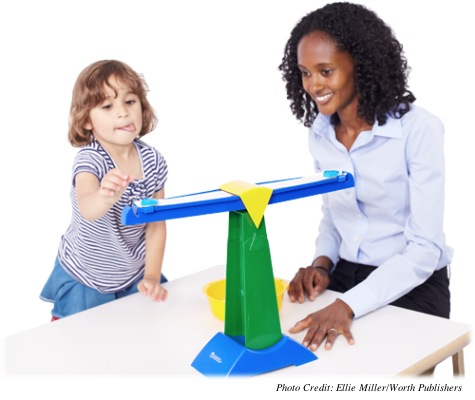
The balance scale problem is an excellent way to analyze a child’s ability to use logical reasoning because it tests whether he/she can predict the outcome accurately while also offering researchers an opportunity to observe the explanation that the child uses to justify his/her prediction. The original research by Piaget and Inhelder found consistent age differences in performance on the balance scale task. More recently, these differences have been studied in detail by developmental psychologist, Robert Siegler.
Please keep in mind that while research has revealed age parameters that generally mark different reasoning abilities, children, their brains, their experiences, and their development are unique, so please think of the age brackets as general guidelines.
Young children under the age of six generally do not understand how to balance the scale. If you ask them to balance the scale, they place the weights at random, sometimes putting all the weights on the same side of the fulcrum!
Children in elementary school realize that in order to balance the scale, there must be weights on both sides of the fulcrum. Until about age nine, children tend to focus only on weight and ignore the influence of the weights’ distance from the fulcrum. When you ask them to predict whether the scale will balance, they generally guess that the side with more weights will tip down regardless of the position of the weights.
Research Results for Older Children
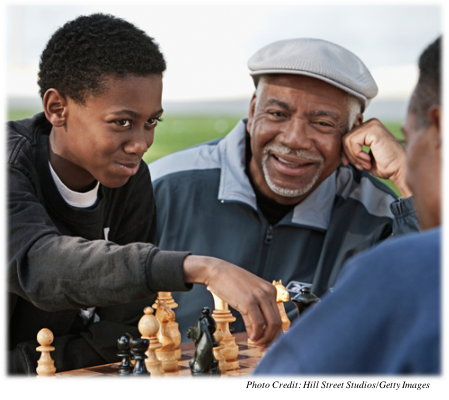
By the time children reach middle school, they generally can balance the scale if allowed to place the weights themselves. They tend to use a trial-and-error approach because they still do not completely understand the relationship between weight and distance even though they take both weight and distance into account. However, they do make errors when asked to predict whether a scale with weights placed by someone else will balance, and furthermore, they have trouble explaining how the scale works.
Teens older than about 14 or 15 generally can anticipate the correct position for the weight needed to balance the scale without touching it. They demonstrate formal operational thinking by recognizing that weight and distance interact and can repeatedly solve the balance scale problem by understanding exactly how weight and distance are related.
Observation: Young Child

You are going to be watching video clips of three children of different ages as they perform the balance scale task. Notice the differences in the ways in which they approach the task while also noting whether they are able to solve the task.
Our first children are 3-year-old Averi and 4-year-old Molly (although Averi does not say much). These girls are still in Piaget’s preoperational stage of reasoning. Based on what you have learned in this activity, can you predict how Molly will perform on this task?
Is Molly able to consistently predict how the scale will or will not balance each time?
Based on her answers and her reactions, what would you say that Molly is focusing on when making her predictions?
Observation: Older Child

Now, compare the response of our next child, Lisle, an 8-year-old in Piaget’s concrete operational stage. Note the differences in the way in which he approaches the task as compared to Molly’s responses. Based on what you have learned in this activity, can you predict how Lisle will perform on this task?
Is Lisle able to consistently predict how the scale will or will not balance each time?
Based on his answers and his reactions, what would you say that Lisle is focusing on when making his predictions?
Observation: Adolescent

Our final observation involves Juana, a 14-year-old who has attained Piaget’s formal operational stage. Based on what you have learned in this activity, can you predict how Juana will do on this task?
Is Juana able to consistently predict how the scale will or will not balance each time?
Based on her answers and her reactions, what would you say that Juana is focusing on when making her predictions?
Conclusions
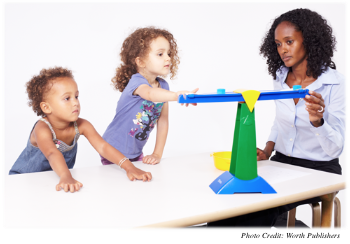
What can we conclude from watching these three individuals?
Young children in Piaget’s preoperational stage really do not understand how the balance scale works. They tend to focus on one aspect of the problem and ignore the other dimensions.
Older children in Piaget’s concrete operational stage understand that they need to consider both weight and distance, but they have not yet grasped the nature of the interaction between weight and distance.
Adolescents who have reached Piaget’s formal operational stage understand that they can solve the balance problem by multiplying weight by distance.
Thinking Better or Knowing Better?
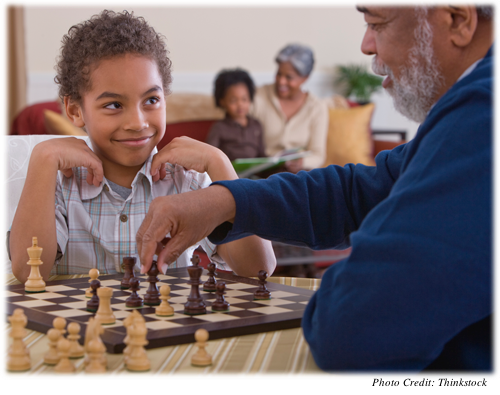
This activity on the balance scale task has given you a better understanding of how children’s reasoning develops with age, but it does not answer the question of why these changes occur. Why do children perform better on various intellectual tasks as they get older?
One possibility is that they think better and that as children grow older, their basic cognitive processes are more efficient. Another possibility is that they know better and that children have learned more and more facts and problem-solving strategies as they make their way through life.
Piaget believed that both of these possibilities are true and suggested three aspects that influence the process of cognitive development:
1. Maturation of the brain;
2. Active experience with objects in the environment;
3. Social interaction with other children and adults.
Piaget viewed each of these factors and their interaction as necessary for cognitive development, but none of these alone is sufficient to ensure healthy and proper cognitive development. He postulated that all these factors must be in play for cognitive developmental progress.
Assessment: Check Your Understanding
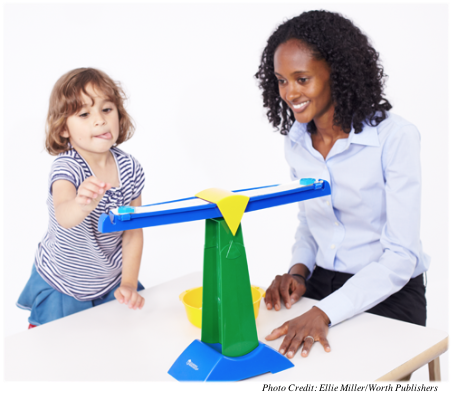
1.
1. Young children under age six in Piaget’s preoperational stage typically do not understand how a balance scale works.
Assessment: Check Your Understanding

2.
2. Older children in Piaget’s concrete operational stage can generate correct solutions to balance scale problems because they understand the interaction of weight and distance in this task.
Assessment: Check Your Understanding

3.
3. Adolescents in Piaget’s formal operational stage can solve balance scale problems easily.
Assessment: Check Your Understanding

4.
4. There is clear evidence for age-related changes in logical reasoning on the balance scale task. How does Piaget explain these changes? In the space below, explain in your own words why older children perform better on the task.
Congratulations! You have completed this activity.Total Score: x out of x points (x%) You have received a provisional score for your essay answers, which have been submitted to your instructor.